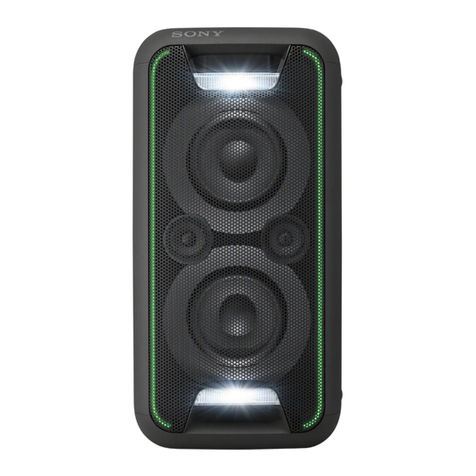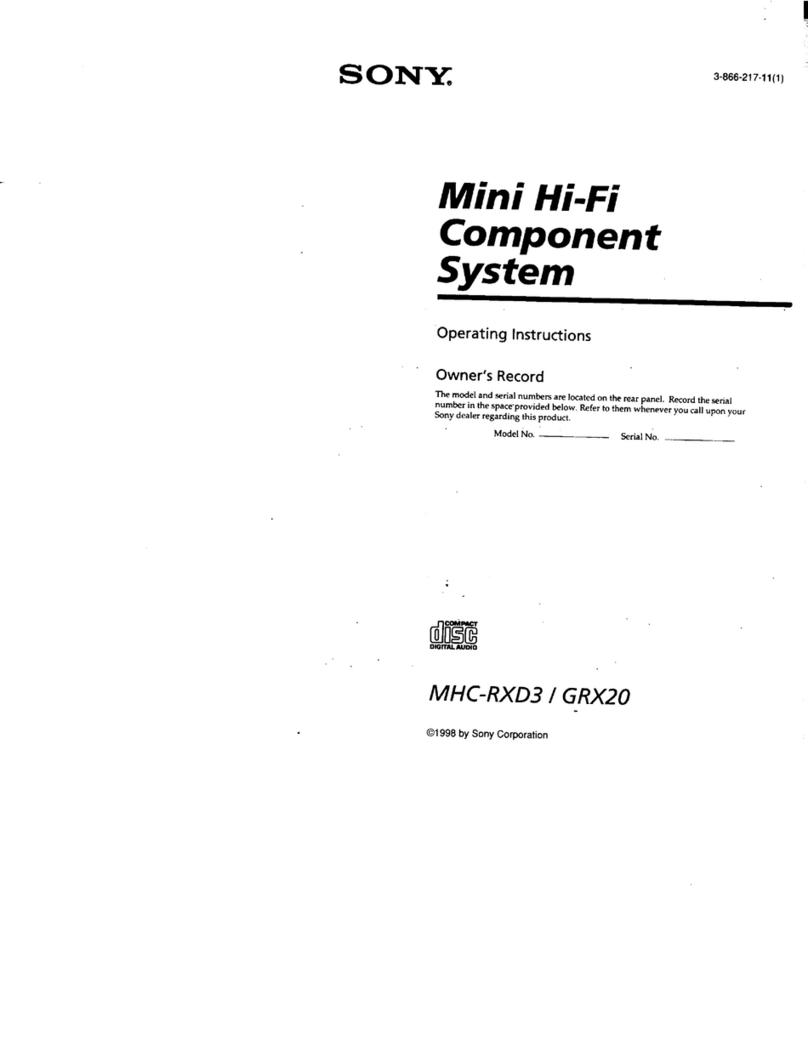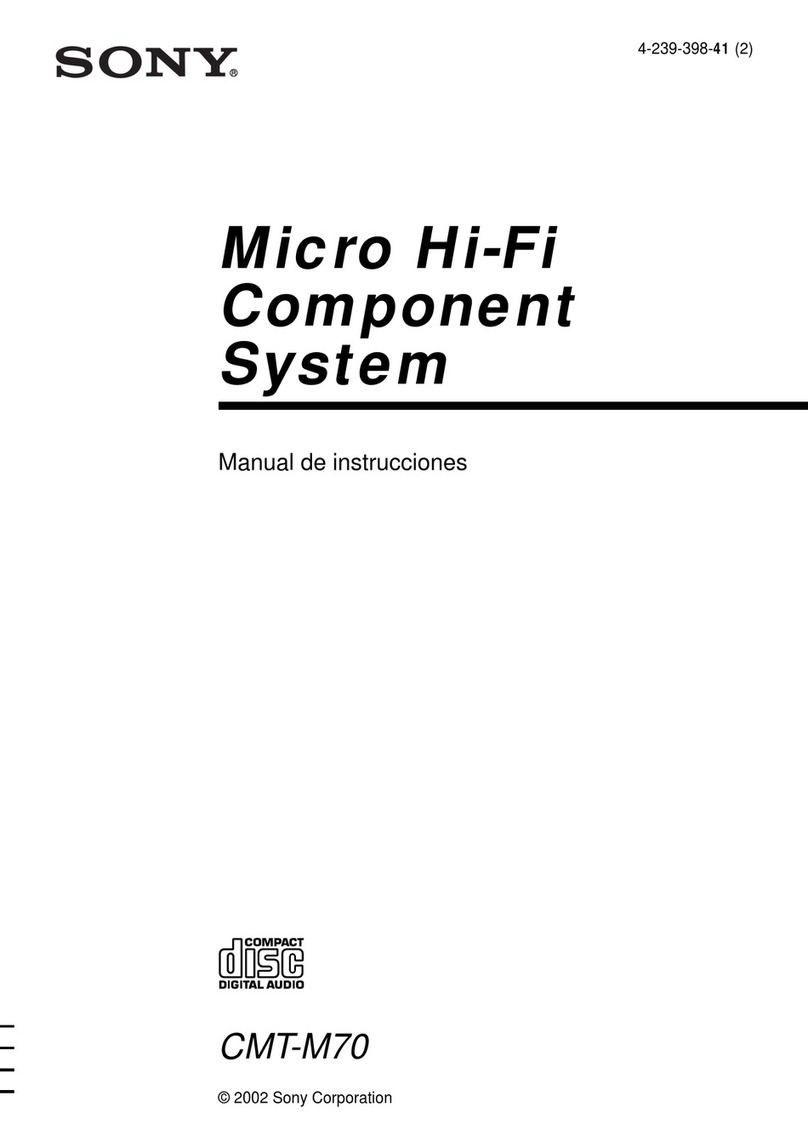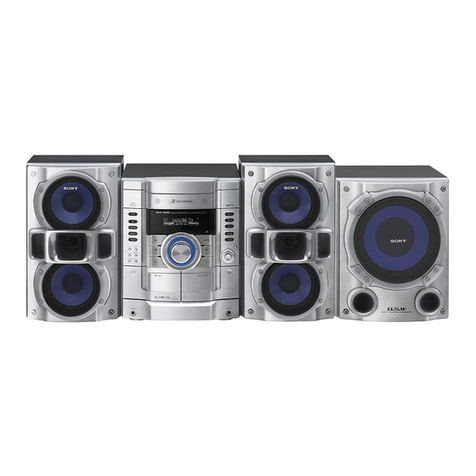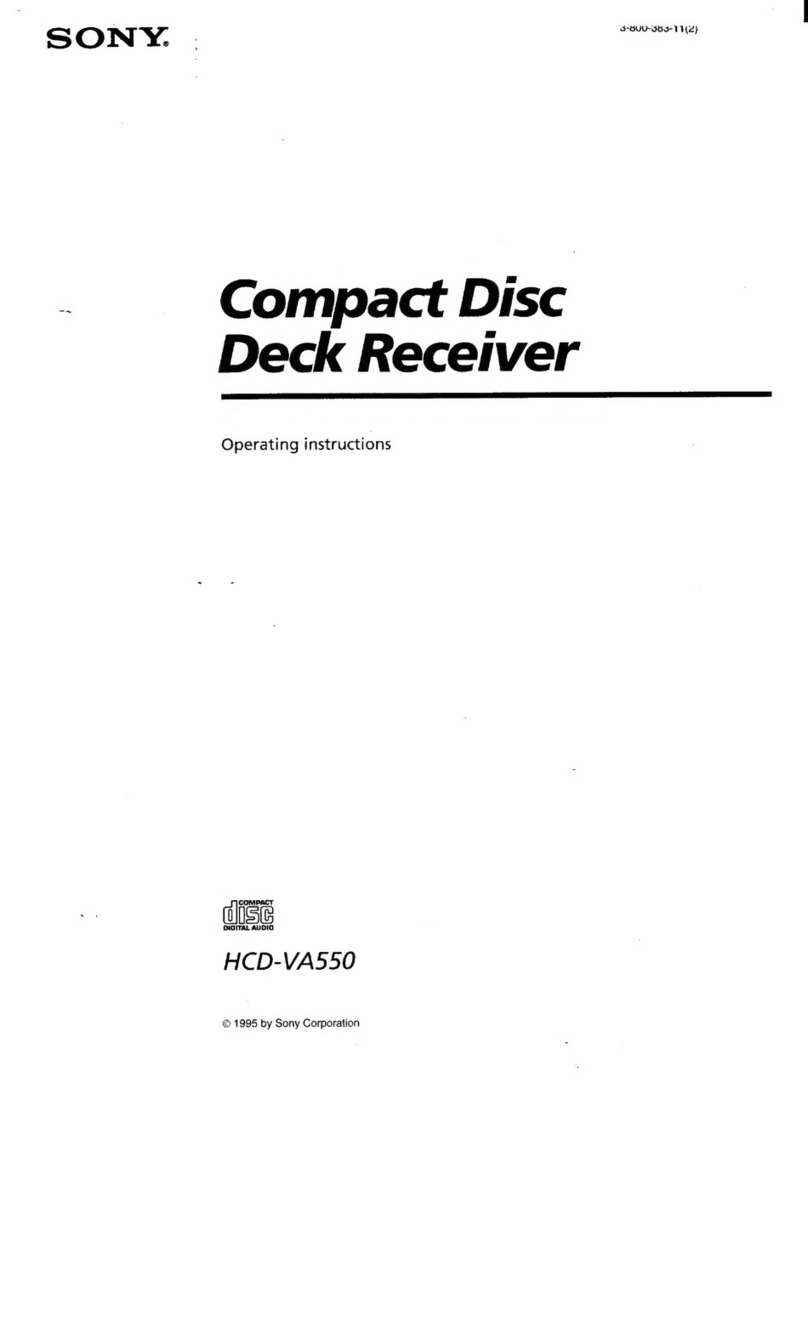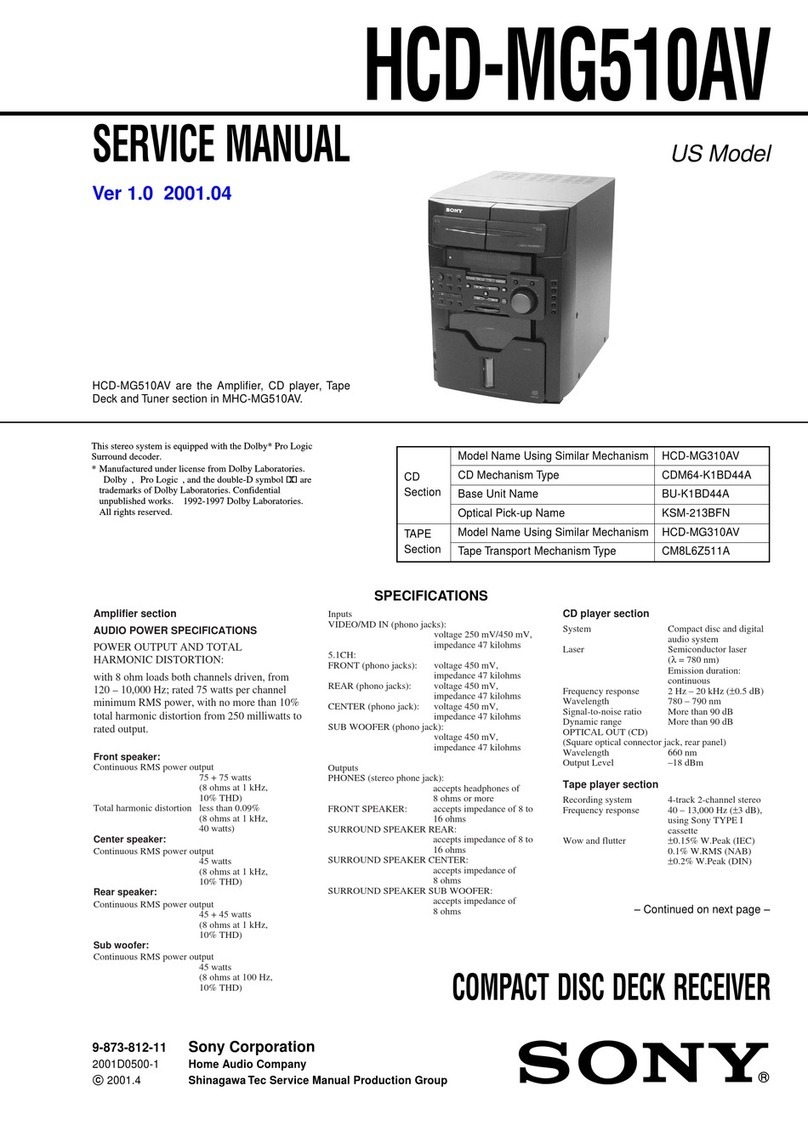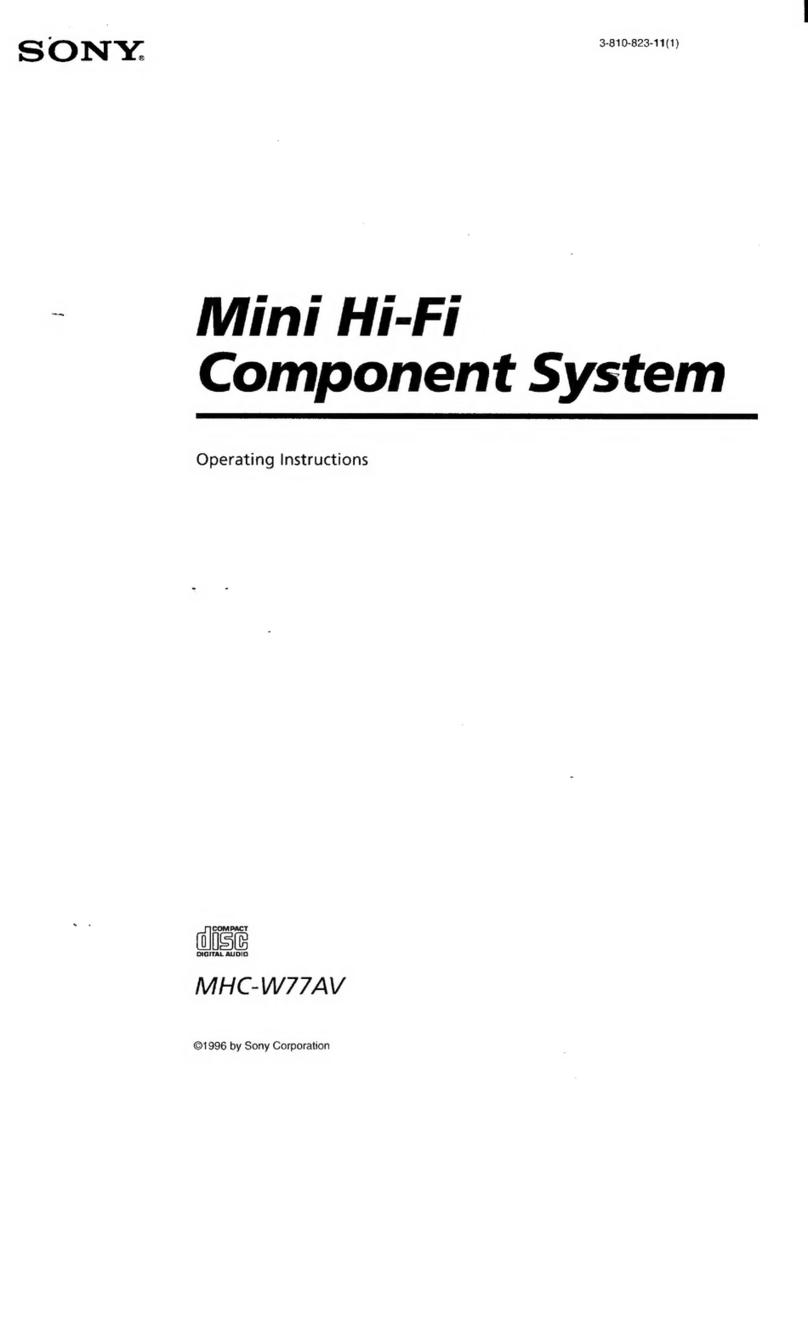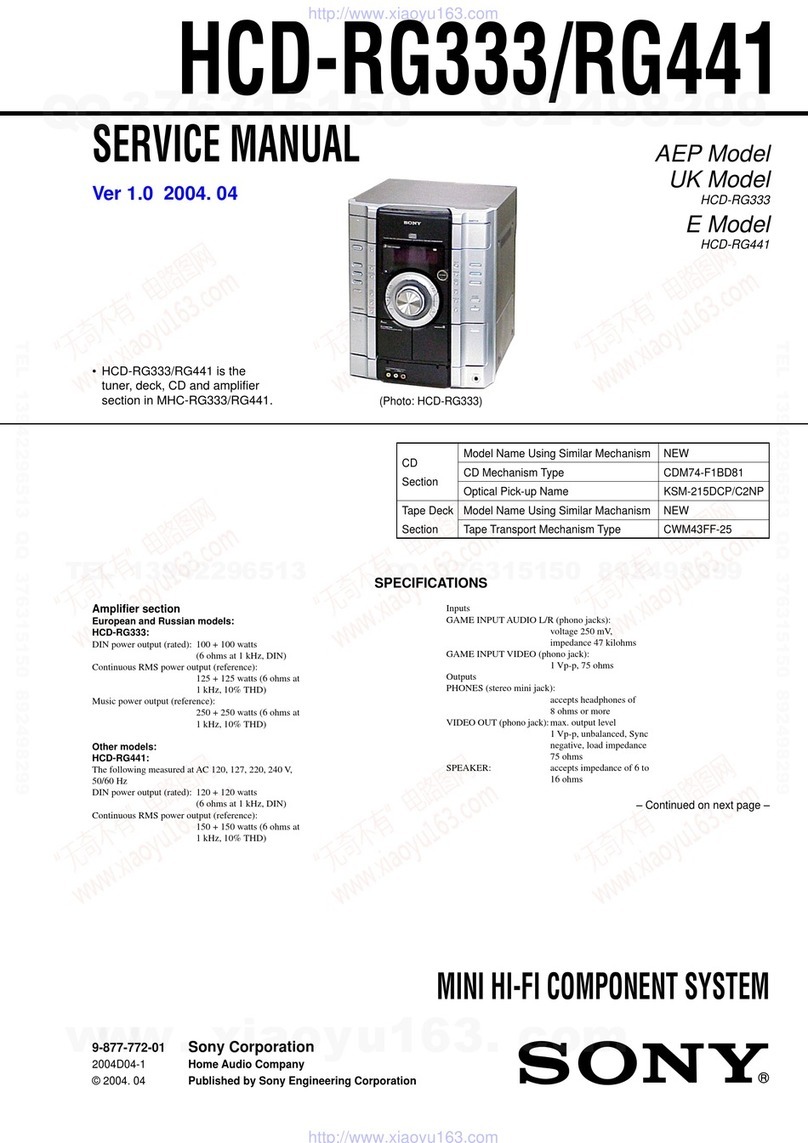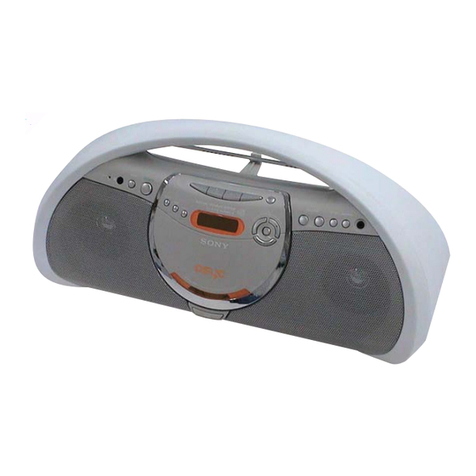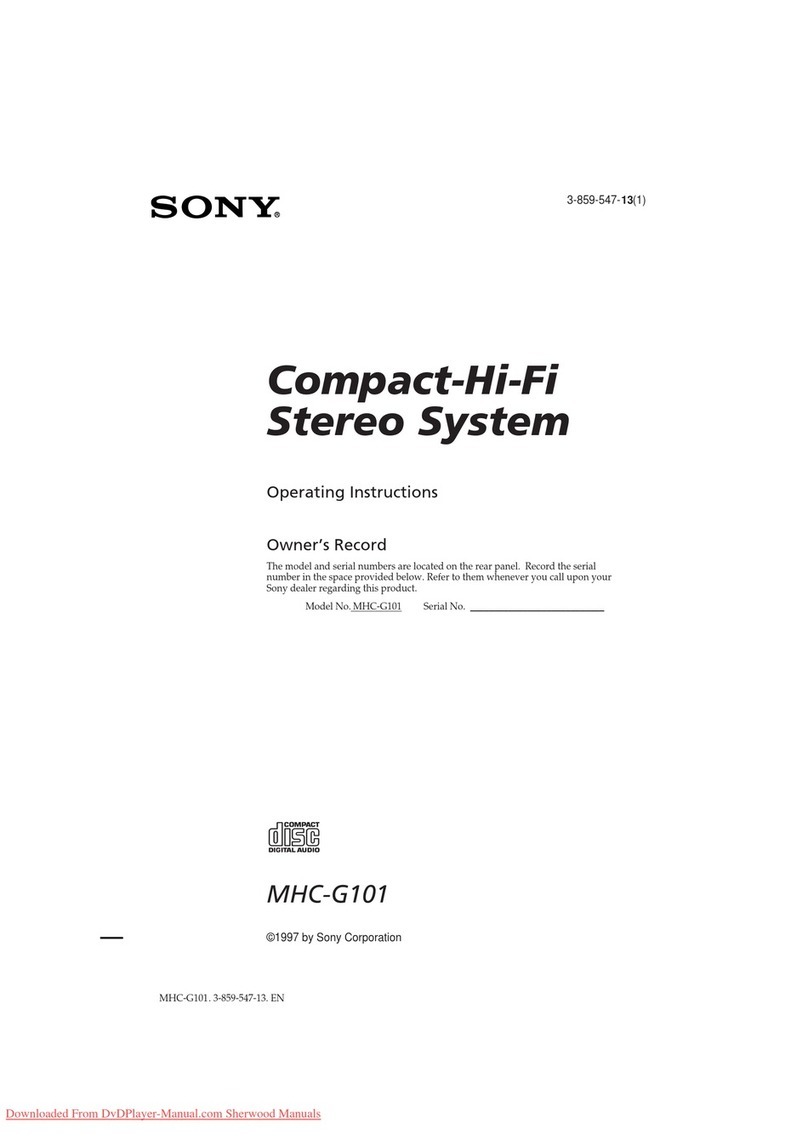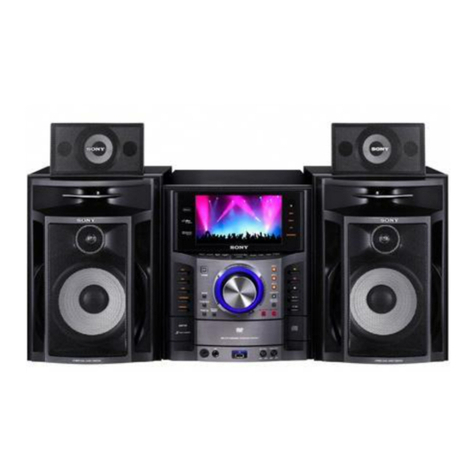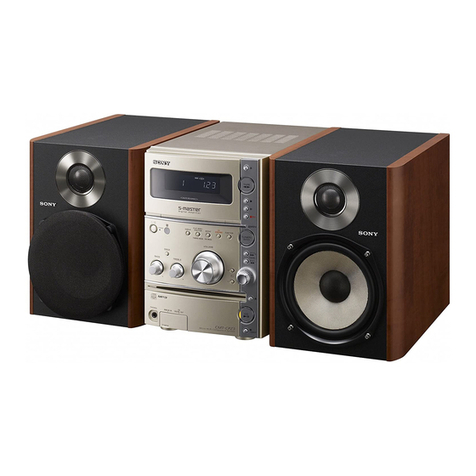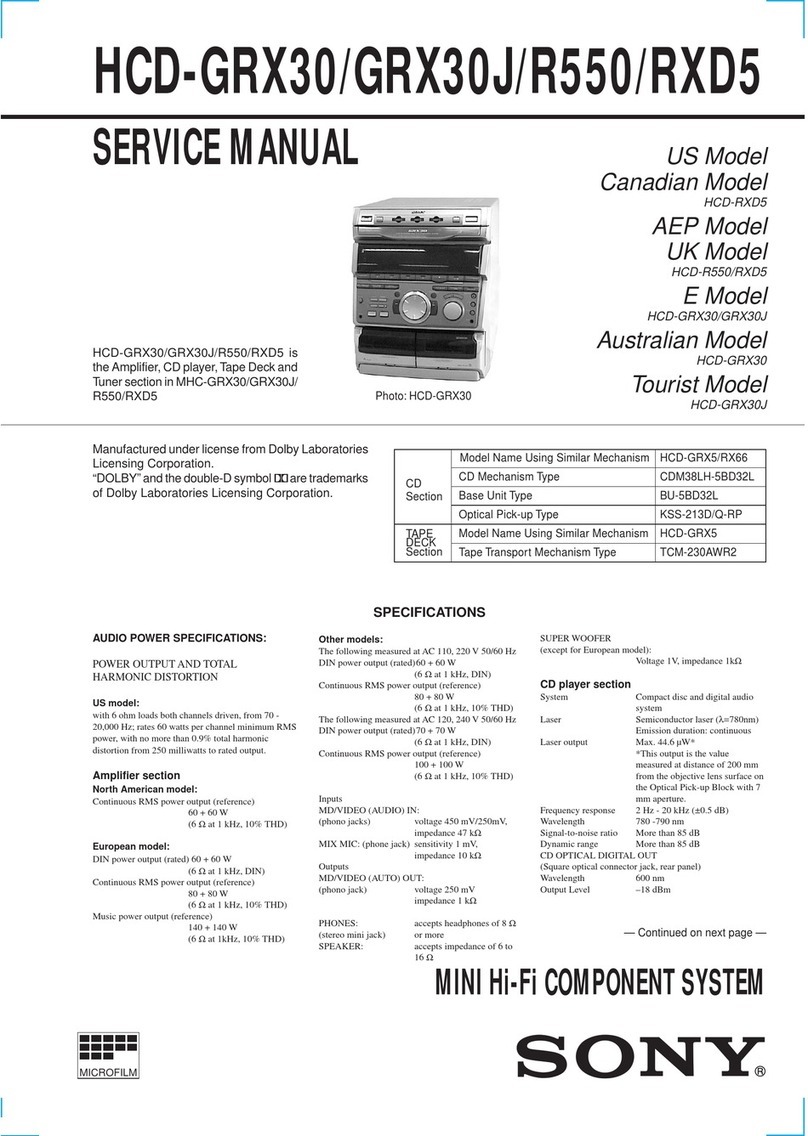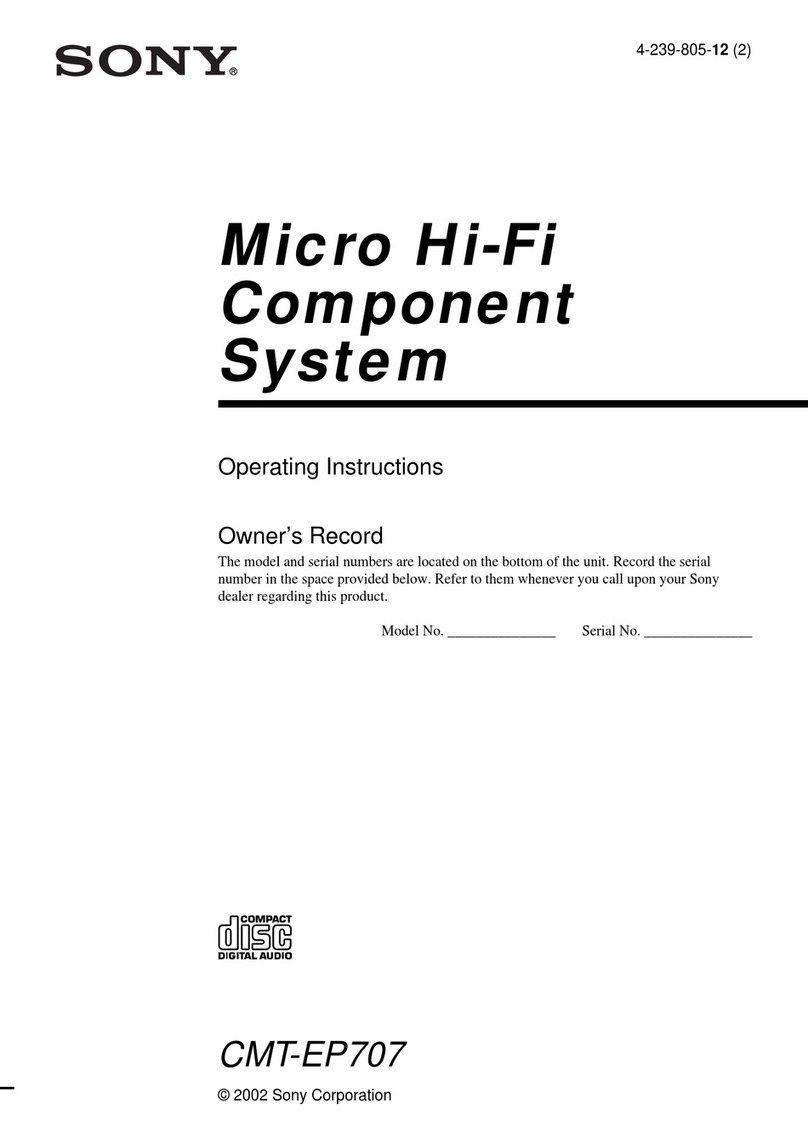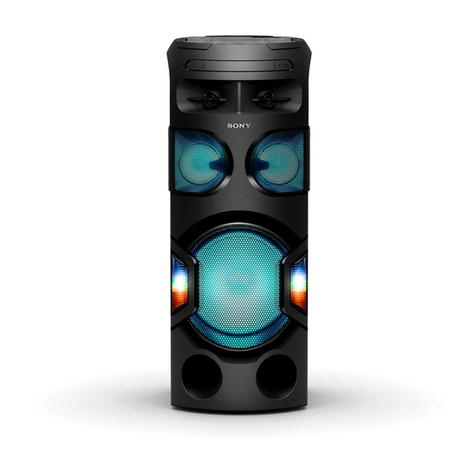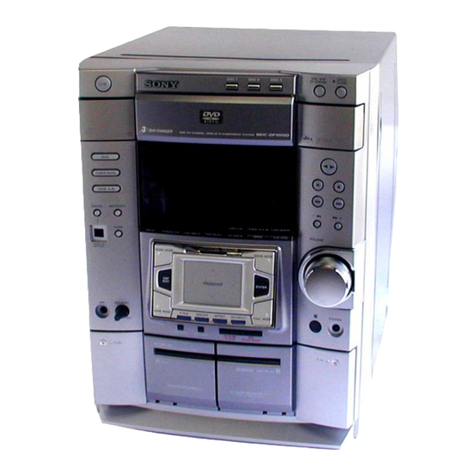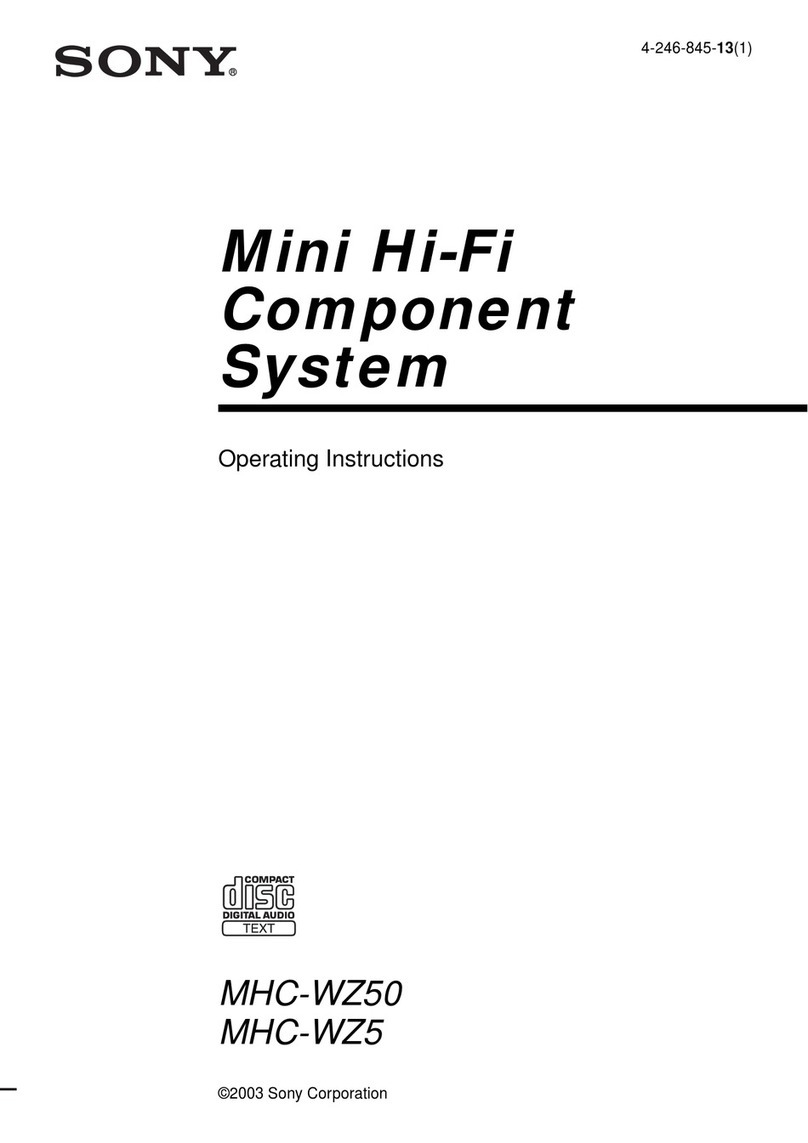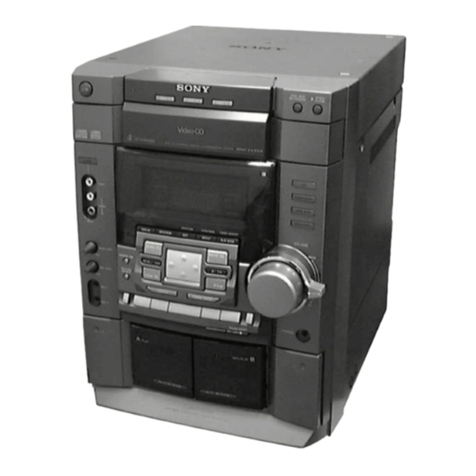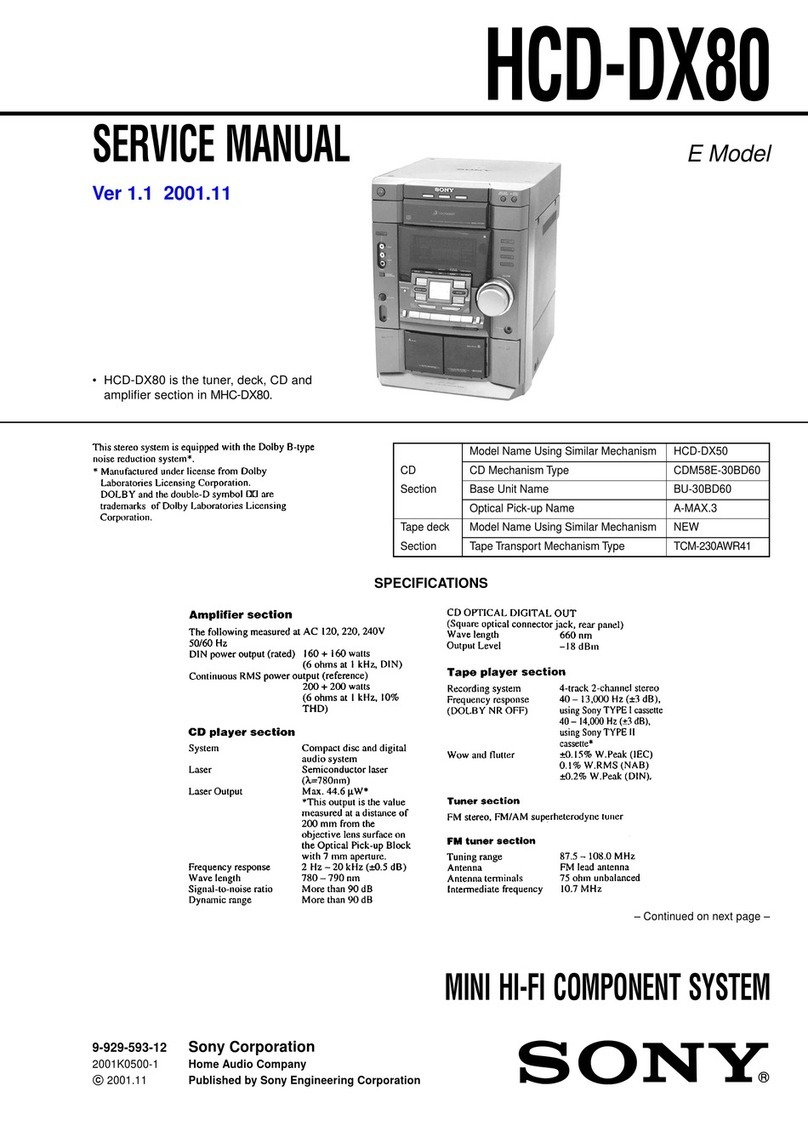2
HCD-GP6V
Tuner section
FM stereo, FM/AM superheterodyne tuner
FM tuner section
Tuning range 87.5 – 108.0 MHz
(50-kHz step)
Antenna FM lead antenna
Antenna terminals 75 ohms balanced
Intermediate frequency 10.7 MHz
AM tuner section
Tuning range
Middle Eastern model: 531 – 1,602 kHz
(with the tuning interval
set at 9 kHz)
Other models: 530 – 1,710 kHz
(with the tuning interval
set at 10 kHz)
531 – 1,602 kHz
(with the tuning interval
set at 9 kHz)
Antenna AM loop antenna, external
antenna terminal
Intermediate frequency 450 kHz
General
Power requirements
Saudi Arabian model: 120 – 127/220 V AC, 50/
60 Hz
Adjustable with voltage
selector
Other models: 110 –120/220–240V AC,
50/60 Hz
Adjustable with voltage
selector
Power consumption 70 watts
Dimensions (w/h/d) Approx. 190 ×250 ×295
mm
Mass Approx. 4.7 kg
Supplied accessories Remote (1)
R6 (size AA) batteries (2)
AM loop antenna (1)
FM lead antenna (1)
Video cable (1)
Design and specifications are subject to change
without notice.
TABLE OF CONTENTS
1. SERVICING NOTES ................................................ 3
2. GENERAL ................................................................... 5
3. DISASSEMBLY
3-1. Top Cabinet, V-OUT Board, DC Fan .............................. 7
3-2. MIC/ECHO Board........................................................... 8
3-3. CD Mechanism Section................................................... 8
3-4. Front Panel Assy.............................................................. 9
3-5. CONTROL Board, Single Cassette Mechanism ............. 9
3-6. MAIN Board, POWER Board ......................................... 10
3-7. VCD Board,
CD Mechanism Deck (CDM55A-30BD61S).................. 11
3-8. LOADING Board ............................................................ 11
3-9. BD Board......................................................................... 12
3-10. Tray (CDM55D) .............................................................. 12
3-11. Base Unit (BU-30BD61S) ............................................... 13
4. TEST MODE ............................................................... 14
5. MECHANICAL ADJUSTMENTS......................... 15
6. ELECTRICAL ADJUSTMENTS .......................... 16
7. DIAGRAMS ................................................................. 19
7-1. Block Diagram
– BD Section – ................................................................ 20
– VCD Section –.............................................................. 21
– MAIN Section – ........................................................... 22
7-2. Printed Wiring Board – BD Section – ............................ 23
7-3. Schematic Diagram – BD Section – ............................... 24
7-4. Printed Wiring Board – VCD Section – ......................... 25
7-5. Schematic Diagram – VCD Section (1/2) – ................... 26
7-6. Schematic Diagram – VCD Section (2/2) – ................... 27
7-7. Printed Wiring Board – MAIN Section – ....................... 28
7-8. Schematic Diagram – MAIN Section –.......................... 29
7-9. Printed Wiring Boards – CONTROL Section – ............. 30
7-10. Schematic Diagram – CONTROL Section –.................. 31
7-11. Printed Wiring Boards
– MIC ECHO/PHONE Section – .................................... 32
7-12. Schematic Diagram – MIC ECHO/PHONE Section – .. 33
7-13. Printed Wiring Board – POWER Section –.................... 34
7-14. Schematic Diagram – POWER Section – ...................... 35
8. EXPLODEDVIEWS
8-1. Overall Section ................................................................ 41
8-2. Front Section ................................................................... 42
8-3. Chassis Section................................................................ 43
8-4. CD Mechanism Deck Section ......................................... 44
8-5. Base Unit Section ............................................................ 45
9. ELECTRICAL PARTS LIST .................................. 46
